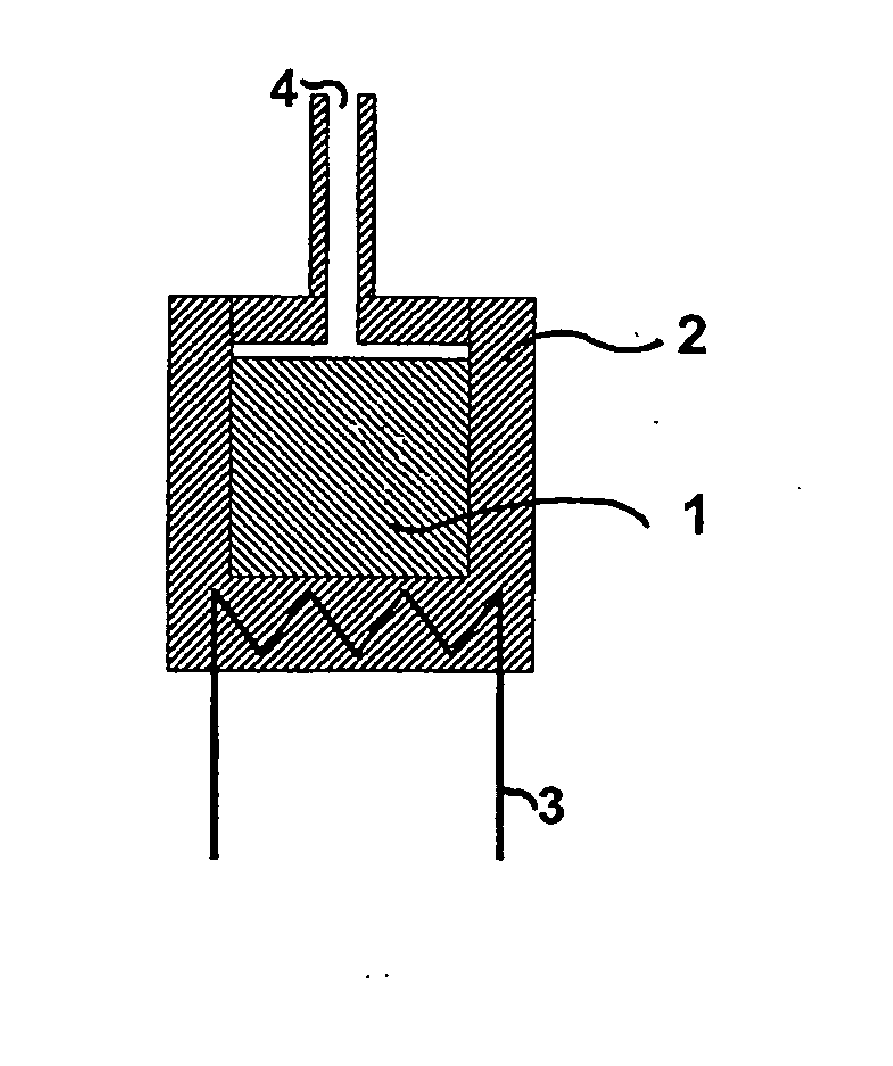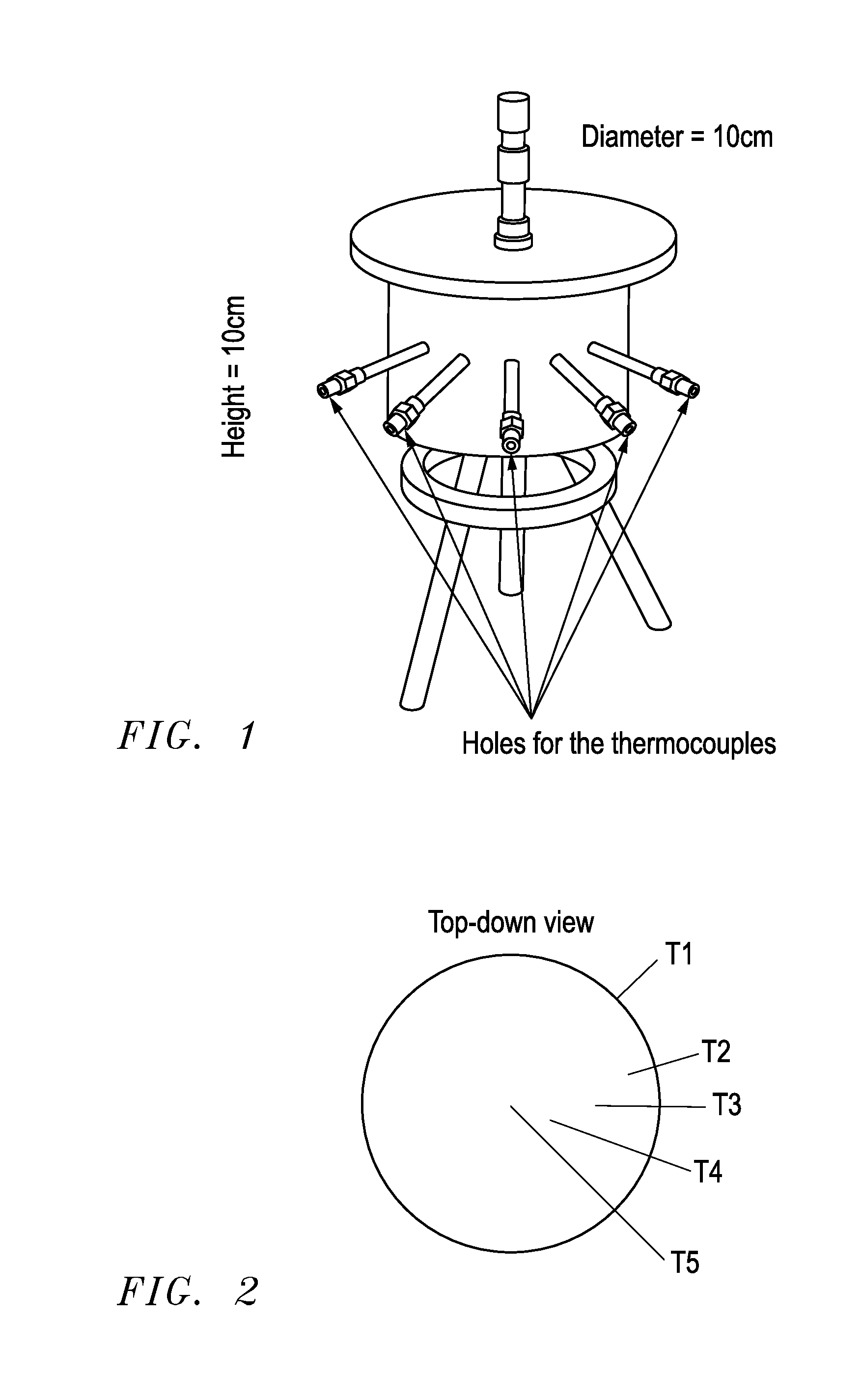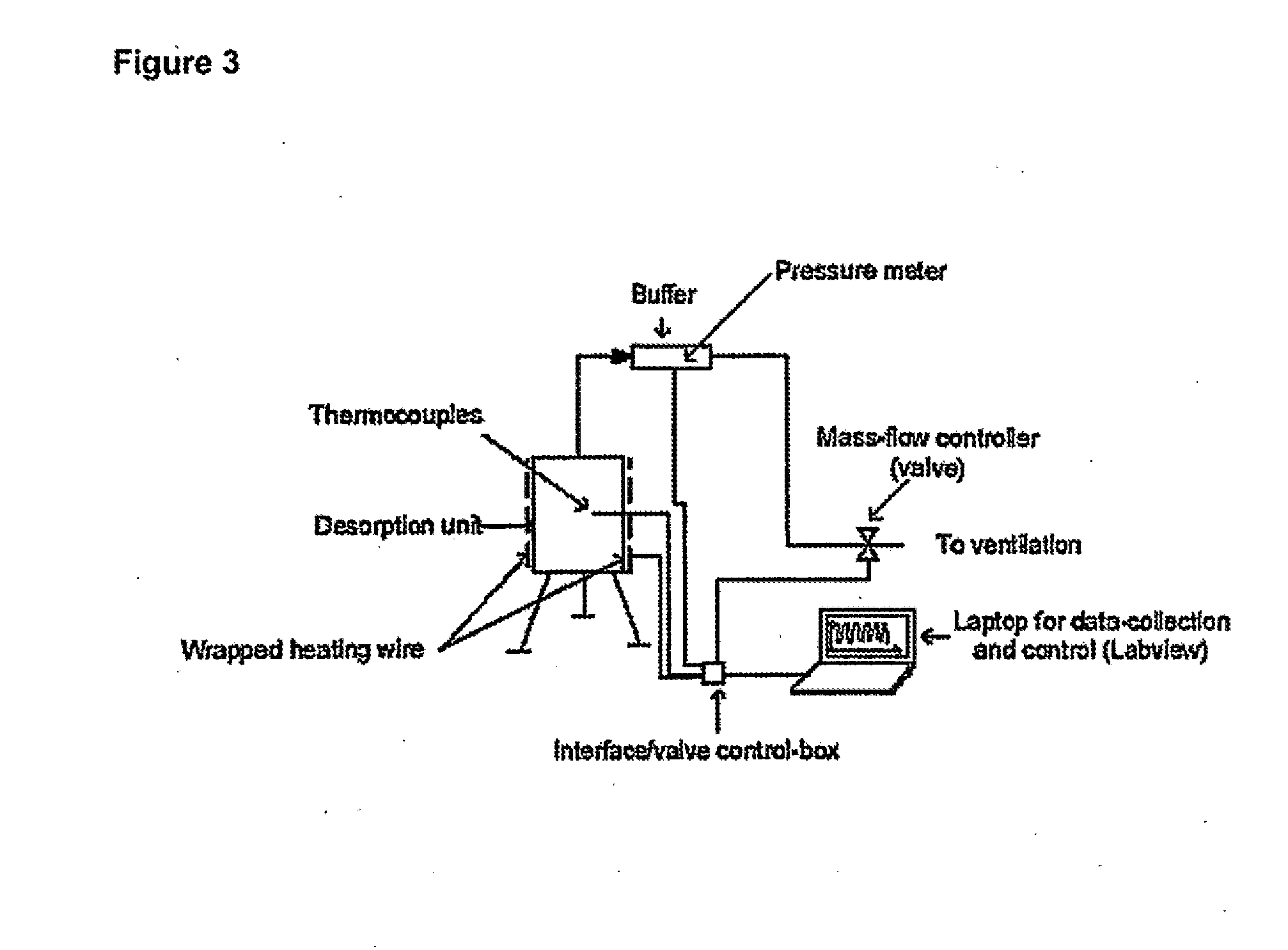Solid ammonia storage and delivery material
a technology of ammonia storage and ammonia discharge, applied in the direction of ammonia handling/storage, exhaust treatment, copper ammonia complexes, etc., can solve the problems of ammonia emission, nosub>x /sub>x is noxious, and the use of conventional so-called three-way exhaust catalysts for automobiles is impossibl
- Summary
- Abstract
- Description
- Claims
- Application Information
AI Technical Summary
Benefits of technology
Problems solved by technology
Method used
Image
Examples
example 1
[0078]An ammonia delivery device was made from stainless steel in the form of a cylindrical container, having the dimensions 2R0=H=10 cm, where R0 is the inner radius and H is the height of the reactor. A photograph of the device is shown in FIG. 1. The device was provided with five wells for insertion of thermocouples placed perpendicular to the tangent of the reactor circumference for determining the radial temperature distribution. Furthermore, a thermocouple was placed on the outer wall to measure the actual temperature of the heated steel wall. Ammonia-saturated MgCl2 powder (258.8 grams) was then placed and compacted slightly by manual pressure to a bed density of approximately 331 kg / m3. A thin sheet of quartz cotton was placed on top of the salt to prevent any grains from being carried out of the reactor. As desorption of ammonia from the complex requires elevated temperature, a heating wire was wrapped around the reactor and thermal insulation (Rockwool) was placed on top o...
example 2
Compression of Solid Ammonia Storage Medium
[0089]FIG. 7 schematically shows a device compression of the solid ammonia delivery material for the preparation of cylindrical tablets (dimensions: 13 mm in diameter; 10 mm high). In this embodiment, the solid ammonia delivery material was compressed in a chamber by applying a pressure of 2-4 tons / cm2 using a piston compressing the powdered saturated storage material. When the piston was removed, the delivery material was in the desired shape of e.g. a tablet, a cylinder or a rod, and had a density above 80% of the theoretical crystal density.
[0090]FIG. 8 schematically shows an embodiment of an ammonia delivery device of the invention for desorption of the compressed delivery material. In this embodiment, one or more tablets of solid ammonia delivery material 1 are placed in a container 2, which can be heated by a heating device 3. Desorbed ammonia leaves the container through a nozzle 4. Heat for the heating device 3 may be provided by e....
example 3
Comparison of the Use of Ammonia Delivery Devices of the Invention and Urea-Technology
[0095]By calculating the amount of NOx (assumed to be pure NO) generated per kilometre in a model fuel (taken as pure n-octane, ρ=696.8 kg / m3), the corresponding driving distance for a given amount of ammonia or urea can be found.
[0096]Based on the EURO 3 standards (The European Parliament, 1998) as well as by the values used by some researchers (Hyundai Motor Co.: Choi et al., 2001), the assumed NOx concentrations and the fuel economies are: 150 ppm and 10 km / litre for stoichiometric combustion (typically gasoline) and 300 ppm and 15 km / litre for lean burn combustion (λ=1.5, typically diesel).
[0097]Taking 1 litre (or 696.8 g) of fuel as a basis of calculations the generated NOx per. kilometre would be 5.87-10−2 mole / km or 0.18 g / km for stoichiometric combustion, while for lean burn combustion (λ=1.5), the NOx emission is 1.15-10−2 mole / km or 0.34 g / km.
[0098]In the below table 3 is shown the requir...
PUM
| Property | Measurement | Unit |
|---|---|---|
| vapour pressure | aaaaa | aaaaa |
| vapour pressure | aaaaa | aaaaa |
| density | aaaaa | aaaaa |
Abstract
Description
Claims
Application Information
 Login to View More
Login to View More - R&D
- Intellectual Property
- Life Sciences
- Materials
- Tech Scout
- Unparalleled Data Quality
- Higher Quality Content
- 60% Fewer Hallucinations
Browse by: Latest US Patents, China's latest patents, Technical Efficacy Thesaurus, Application Domain, Technology Topic, Popular Technical Reports.
© 2025 PatSnap. All rights reserved.Legal|Privacy policy|Modern Slavery Act Transparency Statement|Sitemap|About US| Contact US: help@patsnap.com



